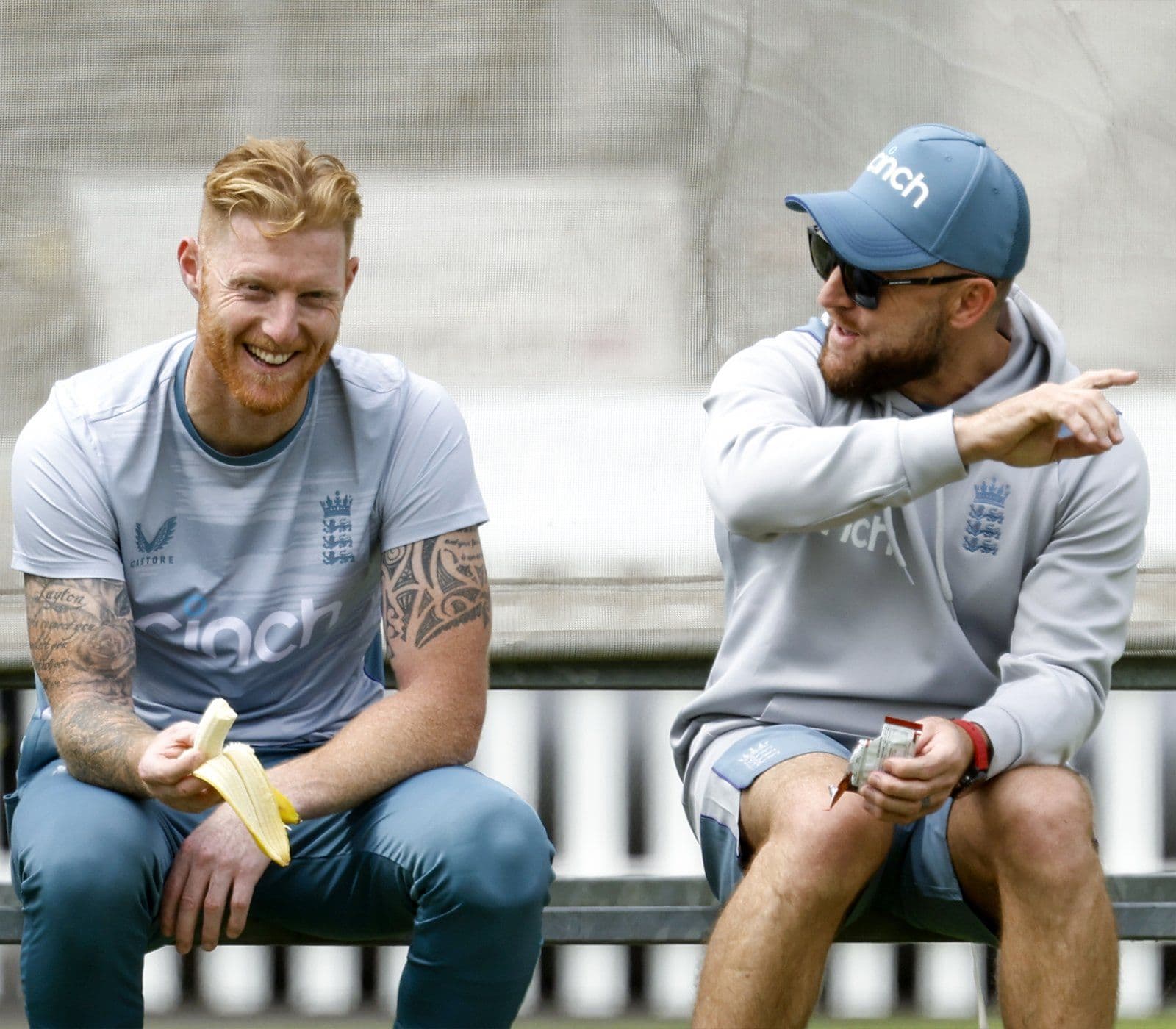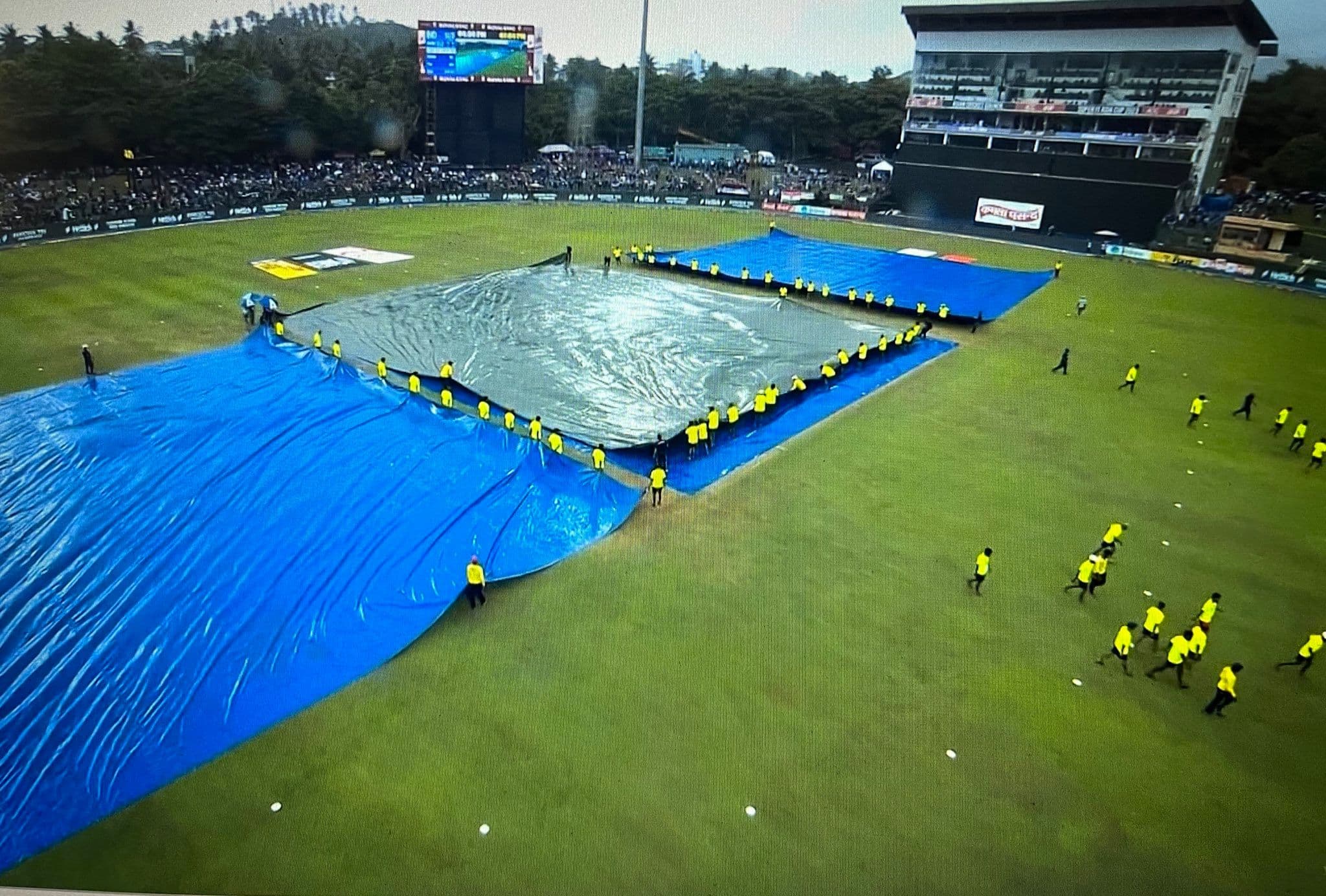Cricket
What is Strike Rate in Cricket
Know what is striker rate in cricket and what it means for batsmen and bowlers, mostly in limited overs. Also, know who has the highest strike rate in ODIs, T20Is and Tests.

Never in the history of cricket has the data been looked at such a granular level as it is now, and strike rate is one such fundamentally important data. Mostly relevant for batters, a strike rate highlights how efficiently a batsman is scoring.
Calculating the batting striker rate is quite simple. One needs to divide the total runs scored by a batter by the total number of balls faced and then multiply the result by 100 to fetch the strike rate. In other words Batting Strike Rate = (Runs Scored ÷ Balls Faced) x 100
Similarly, bowling strike rate is how often the bowler picks up a wicket. Bowling strike rate is the number of balls a bowler bowls to take a wicket. The lower the bowling strike rate the better a bower is.
Quick-scoring batters generally have a high or good strike rate, while defensive batsmen would often reflect a lower strike rate. In modern cricket, openers and finishers often have higher strike rates. In limited-overs formats like ODIs and T20Is, the strike rate is often a significant indicator while selecting a team as a quick-scorer would be more valuable in white-ball cricket than in red-ball cricket.
What is strike rate in cricket batting?
One-day international cricket gained prominence only 50 years back, thus bringing with itself the importance of the metric of strike rate. The advent of T20 cricket further made it more relevant in modern cricket today and in events like the IPL auction, it is closely observed and analysed.
Interestingly, bowlers with a good batting strike rate have become more and more important today across all three formats. While a hard-hitting batter can add extra crucial runs or finish off crunch matches in ODIs and T20Is, a good striker of the ball could change the face of a Test match in the last innings on the final day.
What is a good strike rate in cricket?
While there is no specific threshold for a good strike rate in cricket, below are the percentages that are considered good.
Test Cricket
In the longest format of the game, a strike rate of around 50–60 is considered acceptable. However, since time isn’t of the essence in the five-day cricket, strike rate is hardly an important metric in this format.

ODI Cricket
As we move away from Test matches, the strike rate becomes more and more relevant and ODI is one such format. While a team still has 300 balls to tally runs in the 50-over format, modern cricket teams look to the result beyond doubt while batting first, as the 400-run target is the new normal. A batsman having a strike rate of 80–90 is considered good in ODIs.
T20I Cricket
No international format of cricket puts as much significance on strike rate as T20Is. With only 120 balls at disposal to score as many runs as possible, a strike rate of 120 or even higher is widely seen to be good. Interestingly, a batting average of 30 is also considered great in T20 cricket if the strike rate is over 130.
Highest batting strike rate in an innings
In Test Matches (Minimum 25 Runs)
| Player (Team) | Runs | Balls | Strike Rate | Opposition | Venue |
|---|---|---|---|---|---|
| Umesh Yadav (IND) | 31 | 10 | 310 | v South Africa | Ranchi |
| Stephen Fleming (NZ) | 31* | 11 | 281.81 | v South Africa | Auckland |
| Ryan Harris (AUS) | 25 | 9 | 277.77 | v India | Sydney |
| Muttiah Muralitharan (SL) | 29 | 11 | 263.63 | v India | Kanpur |
| Keith David Boyce (WI) | 26 | 10 | 260 | v England | Port of Spain |

In Test cricket, fast bowler Umesh Yadav has the highest strike rate in an innings, when he tallied 31 runs off 10 balls against South Africa on October 19, 2019. Playing in Ranchi, India was reduced to 450/7, when Yadav’s lightning-quick innings helped the team to declare on 497/9. India went on to win that match by an innings and 202 runs.
Highest batting strike rate in an innings
In ODIs (Minimum 25 Runs)
| Player | Runs | Balls | SR | Opposition | Venue |
|---|---|---|---|---|---|
| James Franklin (NZ) | 31* | 8 | 387.5 | v Canada | Wankhede |
| James Neesham (NZ) | 47* | 13 | 361.53 | v Sri Lanka | Mount Maunganui |
| Nathan McCullum (NZ) | 32* | 9 | 355.55 | v Sri Lanka | Hambantota |
| Glenn Maxwell (AUS) | 32* | 9 | 355.55 | v Zimbabwe | Townsville |
| Moeen Ali (ENG) | 31* | 9 | 344.44 | v Afghanistan | Manchester |
In ODIs, New Zealand’s James Franklin scored the fastest runs in an innings, when he faced Canada in the 2011 ODI World Cup. Batting first at the Wankhede Stadium, the Kiwis were reduced to 318/6 in 48 overs, when Franklin hit three sixes and two boundaries to help his team end on 358/6 in 50 overs.
Highest batting strike rate in an innings
In T20Is (Minimum 25 Runs)
| Player | Runs | Balls | SR | Opposition | Venue |
|---|---|---|---|---|---|
| Dipendra SIngh Airee (NEP) | 52* | 10 | 520 | v Mongolia | Hangzhou |
| Harry Brook (ENG) | 31* | 7 | 442.85 | v West Indies | St George's |
| Dwayne Smith (WI) | 29 | 7 | 414.28 | v Bangladesh | Johannesburg |
| Saad Bin Zafar (CAN) | 29* | 7 | 414.28 | v Bahrain | Al Amerat |
| Norman Vanua (PNG) | 47 | 12 | 391.66 | v Vanuatu | Apia (No 2) |

One of the most recent exploits in this debate came during the 2023 Asian Games Men's Cricket Competition when Nepal faced Mongolia. Coming at number five, Nepal’s DS Airee hit the fastest T20I fifty, which had a whopping eight sixes. His outlandish striker of 520 is the highest in T20Is so far.
What is bowler strike rate in cricket?
Unlike the batting striker rate, a bowler’s strike rate is the average number of balls a bowler bowls to take a wicket. One can calculate it by dividing the total balls bowled by the total wickets taken and then multiplying it by the numerical 6, which constitutes an over.
Bowling Strike Rate = (Total Balls Bowled ÷ Total Wickets Taken) × 6
Here:
- Total Balls Bowled is the cumulative number of deliveries bowled by the bowler.
- Total Wickets Taken is the total number of wickets the bowler has taken.
- The result is then multiplied by 6 to standardize the strike rate to the number of balls bowled per wicket in a typical over, which consists of 6 balls
Hence, a good bowler will have a lower strike rate indicating that that he/she takes wickets more frequently. While the economy rate is still the most important metric to measure a bowler’s efficiency, T20I cricket holds the bowling strike rate in high regard.
Highest career bowling strike rate in Cricket
Min 2000 balls in Test, 1000 in ODI and 500 in T20I
| Format | Player | Nation | Bowling Strike rate |
|---|---|---|---|
| Tests | George Lohmann | England | 34.19 |
| ODIs | Ryan Harris | Australia | 23.43 |
| T20Is | Dhruvkumar Maisuria | Botswana | 10.64 |
FAQs
What is the meaning of the 200 strike rate?
If a batsman scored 200 runs per 100 balls, his strike rate would be 200. To find a batsman's striking rate, divide the total runs scored by balls faced by 100 and multiply the result.
Is 70 strike rate good?
A strike rate of between 80 and 90 is good in One Day Internationals (ODIs) while between 50 and 60 is considered decent in Test cricket.
What is strike rate in cricket in Hindi?
There is no proper translation of the strike rate in Hindi regarding cricket. Though strike rate generally translates to the rate of success, known as सफलता दर in Hindi. In cricketing terms, the strike rate is spelt as स्ट्राइक रेट in Hindi.
what is strike rate in cricket in Tamil?
In cricket, the term "strike rate" is often used to measure a batsman's performance. In Tamil, it can be referred to as "கிரிக்கெட் ஸ்ட்ரைக் விகிதம்" (pronounced as "Kriket Strike Vigitham").
Recommended Articles

An M.A. in English Literature, Subhayan is an experienced journalist and sports writer. Having worked as a journalist at Hindustan Times, Subhayan covered diverse beats including sports, education, and health, showcasing his versatility and in-depth understanding of various subjects.


